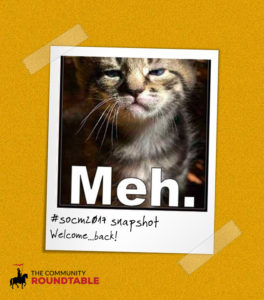 The rise of communities as a powerful tool for behavior change has brought with it no shortage of new platforms and technology. There are large enterprise level platform providers, smaller niche offerings, community offshoots of major social and CRM platforms, and hybrid community-collaboration platforms for community professionals to choose from. (Check out how our own Rachel Happe feels about what’s going on in the vendor space in her post “A 2017 View of the Community Platform Market.“)
The rise of communities as a powerful tool for behavior change has brought with it no shortage of new platforms and technology. There are large enterprise level platform providers, smaller niche offerings, community offshoots of major social and CRM platforms, and hybrid community-collaboration platforms for community professionals to choose from. (Check out how our own Rachel Happe feels about what’s going on in the vendor space in her post “A 2017 View of the Community Platform Market.“)
Yet for all the possible options, community professionals in the State of Community Management 2017 survey gave their own platforms a lukewarm rating this year. Just one-in-five respondents to the survey gave their own platform a 9 or 10 on a 10-point Likert scale question overall, and only 1-in-9 said their community’s mobile experience was a 9 or 10.

The “good news” for vendors? Despite their dissatisfaction, more than 70% of respondents said they would be unlikely or very unlikely to change platforms in the next 12 months.
Far from perfect, but hard to get rid of is a brand tagline no one really wants – but it might be where we are.
Why is this? We didn’t get into the details of the scores in the SOCM 2017, but the anecdotal evidence is clear – community managers express frustration with ease-of-use, admin challenges, difficulty finding and surfacing content and activity, issues with metrics and many other areas, depending on the platform. Some of that might be expected – communities are often being bolted on or connected with a number of legacy platforms, making integrations difficult. They are often afterthoughts, an additional burden for IT staff. Community vendors are asked to measure more complex outcomes while fitting into existing tools and technology.
It’s the old Ginger Rogers joke. We want our platforms to dance like Fred Astaire, and do it backwards and in high heels.
That said, vendors would be wise to plug more into what community professionals need from their community solutions, and to focus on developing elements that CMs can use to capture, enhance and measure key community behaviors. As noted in the SOCM 2017, the fact that a number of major community platforms do not allow community managers to see search volume and/or tag best answers is entirely unacceptable.
In community, as in so many other industries – don’t let the desire to develop new features keep you from perfecting your core features.
